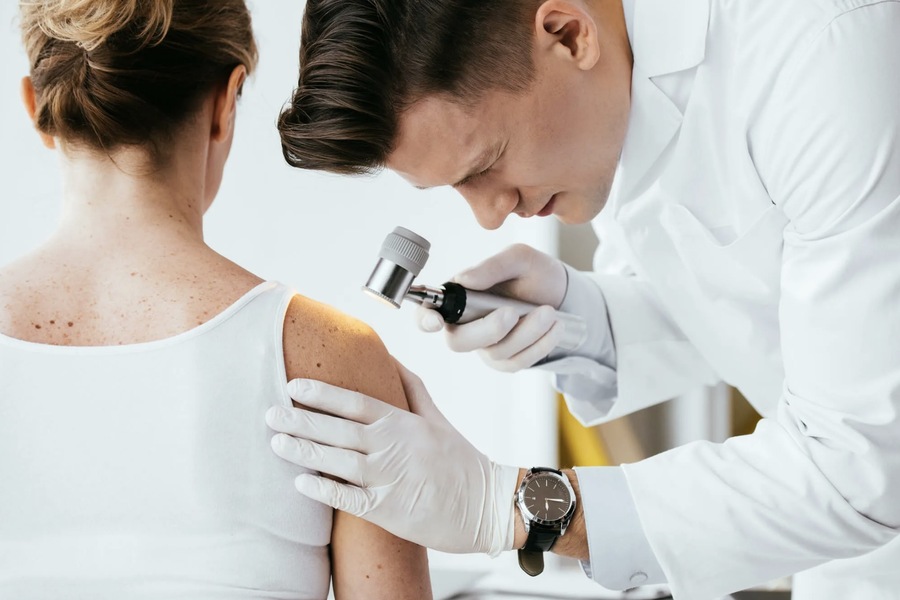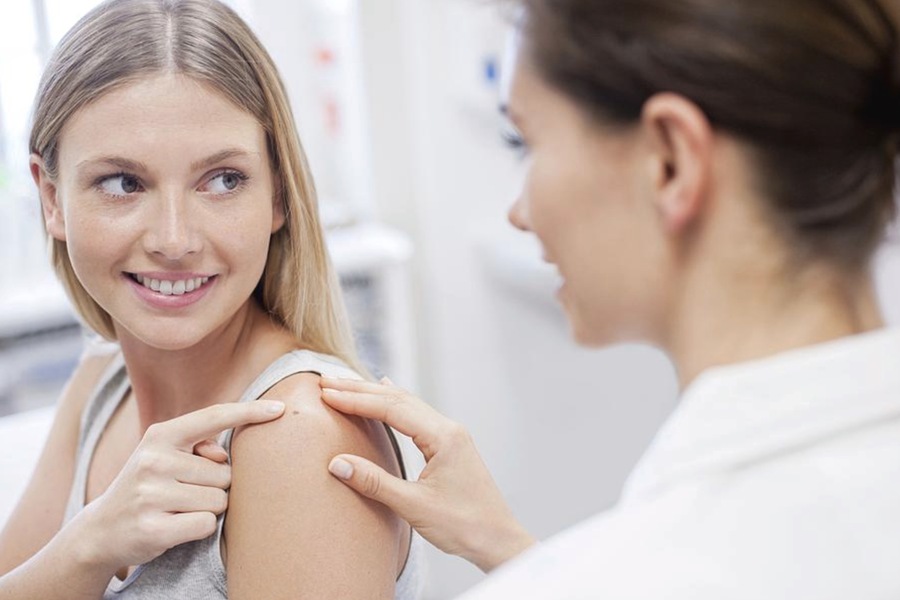Moles, commonly referred to as nevi, are generally considered benign skin growths that develop due to genetic factors and sun exposure. However, emerging research suggests there may be a link between skin allergies and the formation or changes in moles. Dermatologists are increasingly looking into how allergic reactions and skin sensitivities might influence the development and behavior of moles. In this article, we delve into the latest findings on the relationship between skin allergies and moles and what this could mean for residents of Dubai and the UAE, where environmental and lifestyle factors already present unique challenges to skin health.
Understanding the Basics: What Are Moles?
Moles are clusters of pigmented cells, known as melanocytes, which are responsible for the color of our skin, hair, and eyes. These clusters can appear anywhere on the body and vary in size, shape, and color. While most moles are harmless, sudden changes in their appearance or the development of new moles could indicate underlying skin conditions. Regular monitoring, including mole mapping, is recommended for those at higher risk of skin issues. Mole mapping involves tracking changes in moles over time to detect any irregularities early, thereby aiding in the prevention or early diagnosis of potential skin concerns.
How Skin Allergies Affect the Body
Skin allergies occur when the immune system overreacts to an otherwise harmless substance, such as pollen, certain foods, or chemical irritants. This reaction can lead to symptoms like redness, swelling, itching, and rash formation. When the body encounters an allergen, it releases histamines, which cause inflammation in the skin. This inflammation can disrupt the natural balance and behavior of skin cells, potentially affecting pre-existing moles or contributing to the appearance of new ones. Understanding the impact of these reactions is crucial for dermatologists when assessing patients with both moles and allergies.
The Potential Connection Between Skin Allergies and Moles
While the exact link between skin allergies and moles is still under investigation, some dermatologists believe that chronic skin inflammation could play a role in mole formation. Inflammatory skin conditions such as eczema or dermatitis can alter the environment of the skin, affecting the way cells grow and repair themselves. This altered environment may influence the behavior of melanocytes, leading to changes in existing moles or the development of new ones. For residents of Dubai, who are often exposed to allergens such as dust, sand, and air pollutants, understanding this link is essential for effective skin management and care.

Impact of Allergic Reactions on Mole Appearance
Chronic allergic reactions can cause prolonged inflammation in the skin, which may lead to visible changes in moles. These changes could include alterations in size, color, or shape. While such changes are not always indicative of malignancy, they require close monitoring. Mole mapping can be an effective way to document and observe these changes over time. By keeping a detailed record of moles, dermatologists can better identify whether changes are due to benign causes, such as allergies, or if they require further investigation.
Skin Sensitivity and the Development of New Moles
Individuals with sensitive skin are often more prone to developing allergic reactions. These reactions can disrupt the normal functioning of skin cells and may potentially influence mole formation. For example, continuous scratching or rubbing due to itching can cause minor trauma to the skin, which may stimulate melanocytes to cluster and form new moles. In regions like Dubai and the UAE, where individuals are frequently exposed to environmental irritants and allergens, it’s important to consider the role of skin sensitivity when evaluating mole development.
Role of Environmental Factors in Dubai and the UAE
Dubai’s unique environmental conditions—such as high UV exposure, dry air, and frequent sandstorms—pose additional risks for skin health. These factors can exacerbate skin allergies and sensitivities, creating an environment where changes in moles might be more common. For instance, high levels of airborne dust can trigger allergic reactions that lead to chronic skin inflammation. Dermatologists in the region are therefore advising patients to take preventive measures, such as using skin barriers, minimizing exposure to known allergens, and undergoing regular skin check-ups.
The Importance of Regular Skin Monitoring in the UAE
Due to the combination of environmental factors and the prevalence of allergic conditions in Dubai, regular skin monitoring is crucial. Mole mapping is an effective tool that helps dermatologists track changes in moles over time, allowing for early detection of any suspicious alterations. Regular monitoring is particularly important for those who experience frequent allergic reactions, as inflammation and skin irritation could mask or mimic changes associated with skin disorders. Ensuring early intervention can significantly improve outcomes and provide peace of mind for residents.
Exploring the Role of the Immune System
The immune system plays a pivotal role in maintaining skin health. When it overreacts to allergens, it can disrupt the normal function of skin cells, including melanocytes. This disruption could potentially contribute to mole development or changes in existing moles. Some dermatologists speculate that repeated exposure to allergens might sensitize melanocytes, making them more prone to clustering together and forming moles. Further research is needed to establish a concrete link, but understanding the immune system’s involvement provides valuable insight into managing both allergies and mole formation.
Guidelines for Managing Skin Allergies and Moles
Managing skin allergies effectively can minimize their impact on mole appearance and development. Dermatologists recommend the following steps:
Identify and Avoid Triggers
Understanding what triggers your allergic reactions and avoiding these substances can reduce skin inflammation.
Use Protective Skincare Products
Barrier creams and hypoallergenic moisturizers can protect sensitive skin and reduce the risk of inflammation.
Regular Dermatological Check-Ups
For individuals with a history of skin allergies, routine check-ups can help monitor the condition of moles and identify any changes early.
Incorporate Mole Mapping
Including mole mapping as part of your regular skin health routine ensures that any changes are documented and analyzed over time.

The Need for Further Research
Despite growing interest in the relationship between skin allergies and moles, more research is needed to fully understand the mechanisms involved. Longitudinal studies that track individuals with chronic skin allergies could provide deeper insights into whether these conditions directly contribute to mole formation or changes. This area of study holds promise for enhancing our understanding of skin health and improving the management of patients with complex dermatological profiles.
Conclusion
The potential link between skin allergies and moles highlights the need for a holistic approach in dermatology. For residents of Dubai and the UAE, where environmental factors can aggravate skin conditions, a comprehensive strategy that includes managing allergies, monitoring mole changes, and minimizing exposure to triggers is essential. By integrating mole mapping into routine skin care, dermatologists can ensure that any changes are detected early, providing a proactive approach to skin health. As research in this area progresses, we may gain a better understanding of how the mind, body, and environment interact to influence skin health, ultimately leading to more effective treatments and preventive measures.
While the link between skin allergies and moles is still being explored, it is clear that skin health is influenced by a complex interplay of factors. Regular monitoring and a comprehensive approach to managing allergies can play a significant role in maintaining skin health and ensuring early detection of any potential concerns.
